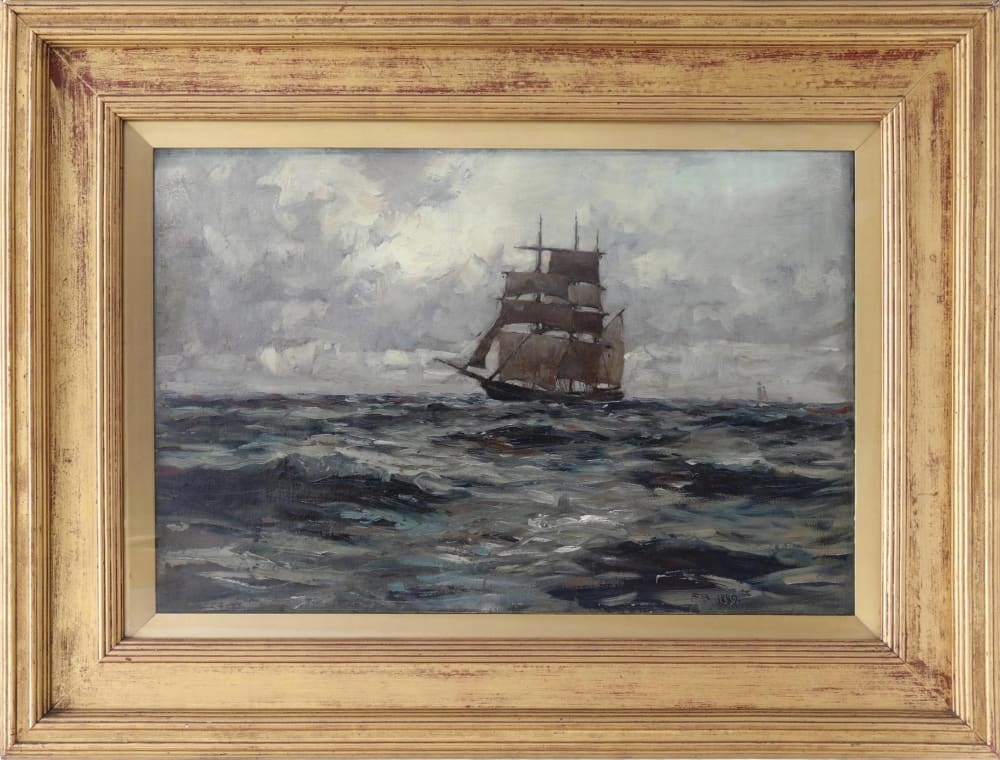
Shipping in Open Seas 1889, by Frank Brangwyn
Frank Brangwyn 1867-1956
Framed: 57 x 75 cm (22.4 x 29.5 ins.)
Provenance
7 June 2007, Christies London, Victorian and Traditionalist Pictures, Lot 130.
In 1887 a rather impoverished Brangwyn visited Cornwall, sponsored by Frederick Mills, the elderly head of a firm of artist's colourmen in Soho, who had a reputation for supporting young artists. He travelled in steerage on the Waterford Packet, eventually disembarking at Falmouth. Brangwyn was instantly taken by Cornish waterfront life, writing: 'The whole harbour was filled with boats and men getting ready for the fishing; it was a sight that knocked me silly'.
Brangwyn’s earliest Cornish subjects, which concentrate on atmosphere and perspective, are quite discreetly toned but demonstrate a command of the en plein-air and square-brush approaches to painting. ‘Shipping in open seas, 1889’ is such a work. The painting shows the influence of Henry Scott Tuke and Charles Napier Hemy, whom Brangwyn had met and admired as a lad on the Thames watching and copying the artist. It is often cited that Brangwyn's style shows the influence of Stanhope Forbes and the Newlyn School, which given Forbes fame is undoubtedly the case, although there is no evidence that Brangwyn ever went to Newlyn. But such was the perceived association of Brangwyn’s style with Newlyn that in 1888, the Royal Academy having accepted the Barkstrippers for its summer exhibition, classified the picture in the season’s reviews as, 'a Newlyn painting'. These early Cornish works are quite rare but demonstrate that despite his youth and lack of any atelier training, Brangwyn was an accomplished en plein-air painter.




